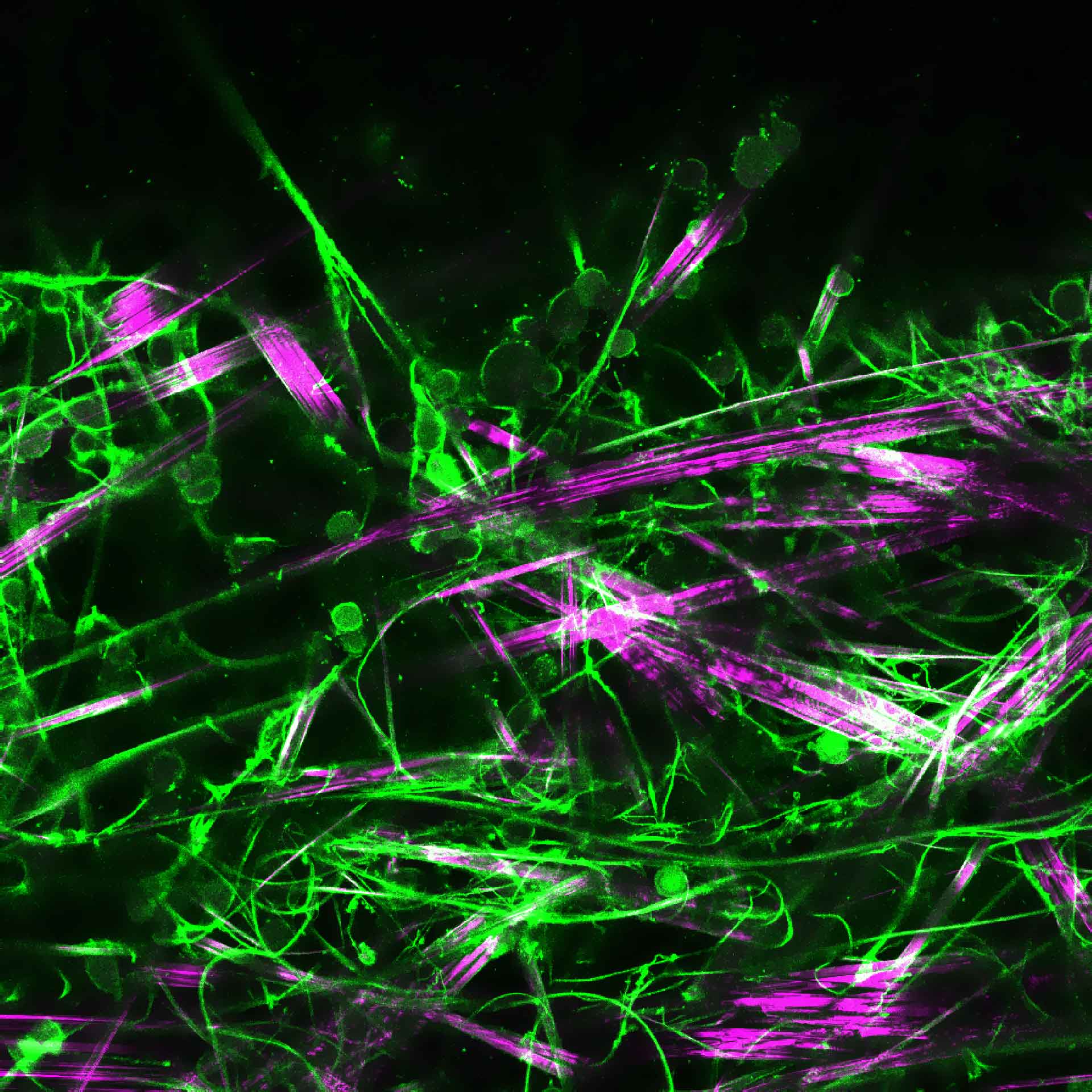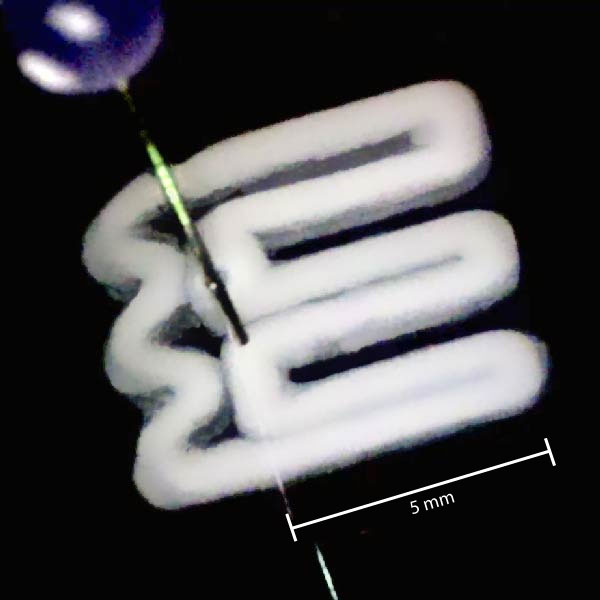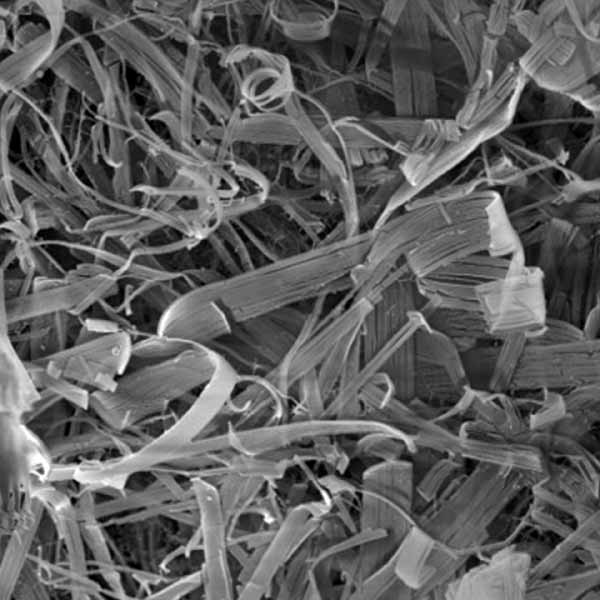molecular gels
Molecular gels are formed by the self-assembly of low molecular weight molecules, namely «small», non-polymer molecules, in organic solvents or in water.
They are polymer-free hydrogels.

Scaffolds for Cell Culture
Molecular hydrogels based on a single synthetic molecule, N-heptyl-D-galactonamide have been successfully used as scaffold for the 3D cell culture of neurons and glial cells. The self-assembled fibers sustain a very soft, porous, low density hydrogel scaffold.

Hydrogel wet-spinning
A single small molecule, N-heptyl-D-galactonamide, can be spun in highly hydrated gel spaghettis. The self-assembling process is very well-controlled: it gives rise to nanometric, monodisperse supramolecular fibers, with a radial organization.

3D printing
The molecular hydrogel N-heptyl-D-galactonamide can be 3D printed by a solvent-exchange process. It gives well-defined patterns of highly hydrated, low density and transient hydrogel.

Molecular gels structure
Molecular gels are formed by the self-assembly of small non-polymer molecules. They self-assemble into fibers or ribbons of nanometric to micrometric size. The fibers network entraps water in case of hydrogels or an organic solvent in case of organogels.
This work has been funded by the French national Research ANR (grant n°ANR-15-CE07-0007 « Neuraxe » )

